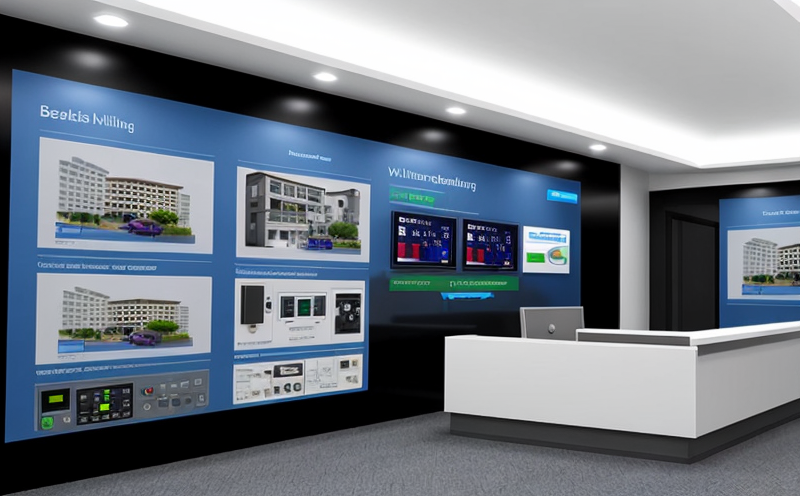ISO 16484-10 Smart Building Integration Verification
The ISO 16484 series of standards is designed to address environmental and energy performance requirements for buildings. Specifically, ISO 16484-10 focuses on the integration of building automation systems (BAS) into smart building environments. This standard ensures that all components of a building's automated system are integrated seamlessly to achieve optimal efficiency and sustainability.
The process involves verifying that various subsystems, such as HVAC, lighting, security, and energy management systems, work cohesively within the broader framework of the building’s operational goals. The integration verification is critical for ensuring that buildings not only meet their energy-saving targets but also provide a comfortable and safe environment for occupants.
The standard specifies detailed procedures to ensure interoperability among different subsystems, which are crucial in smart buildings where multiple systems need to communicate effectively. This includes testing the response of each system to various inputs from other systems, ensuring that they react as intended without causing any disruptions or inefficiencies.
Proper integration verification is essential for several reasons:
- It ensures compliance with local and international building codes and regulations related to energy efficiency.
- It enhances the overall performance of the smart building by optimizing resource usage (energy, water).
- It minimizes downtime and improves reliability through thorough testing before full deployment.
The test parameters for ISO 16484-10 include a series of checks that ensure each subsystem performs as expected within the integrated system. For instance, in an HVAC setup, we would check how well the cooling or heating units interact with the ventilation systems to maintain optimal indoor conditions.
Specimen preparation involves simulating real-world scenarios where the building’s systems are tested under various conditions to ensure they operate correctly. This includes setting up mock environments and monitoring the performance of each subsystem in isolation before integrating them into a complete system for final verification.
The instrumentation used is sophisticated, capable of measuring multiple parameters simultaneously. For example, temperature sensors, pressure gauges, and energy meters are utilized to gather data that can be analyzed to determine compliance with ISO 16484-10 criteria. The results of these tests are meticulously recorded and reviewed by our team of experts who ensure all findings align with international standards.
The final step is the generation of a comprehensive report detailing each subsystem's performance during testing, highlighting any areas needing improvement, and providing recommendations for enhancing overall system integration. This detailed documentation serves as proof that the building meets stringent quality and efficiency requirements set forth by ISO 16484-10.
By adhering to this standard, organizations can demonstrate their commitment to sustainability while also ensuring they comply with regulatory requirements. Moreover, successful implementation leads to more efficient operations, reduced operational costs, and improved occupant satisfaction in smart buildings.
Why It Matters
The importance of verifying the integration of building automation systems cannot be overstated. Proper integration ensures that all components work together harmoniously towards achieving energy efficiency goals without compromising on safety or comfort levels for occupants.
- Enhanced Efficiency: Integrated systems allow for better management of resources such as electricity, water, and heating/cooling, leading to significant cost savings over time.
- Improved Safety: By ensuring that all subsystems function correctly together, potential hazards are minimized, creating safer environments.
- Increased Comfort: Properly integrated systems can maintain consistent indoor temperatures, humidity levels, and air quality, enhancing the overall comfort of building occupants.
In addition to these benefits, verifying integration also helps in meeting increasingly stringent environmental regulations and standards. Compliance with such standards not only reduces legal risks but also enhances an organization's reputation as a leader in sustainable practices.
Furthermore, ISO 16484-10 certification can provide competitive advantages by demonstrating a commitment to excellence in building design and management. This can be particularly valuable when bidding for contracts or seeking partnerships with other organizations focused on sustainability.
Applied Standards
The application of ISO 16484-10 involves rigorous testing protocols aimed at verifying the integration of various subsystems within a building’s automated system. This standard emphasizes interoperability, reliability, and efficiency across different components like HVAC, lighting systems, security features, and more.
Interoperability is key to ensuring that all parts of the system communicate effectively without causing malfunctions or unexpected behaviors. The standard provides clear guidelines on how to achieve this by specifying communication protocols, data exchange formats, and error-handling mechanisms among other things.
Reliability is another critical aspect tested under ISO 16484-10. This includes checking that the integrated system remains operational even when faced with unexpected challenges such as power outages or software updates. By ensuring high reliability, buildings can continue providing essential services to their occupants without disruptions.
Efficiency forms the backbone of any successful smart building project. The standard sets performance targets based on energy consumption metrics and other relevant parameters measured during testing phases. Achieving these efficiency goals helps reduce operational costs while contributing positively towards environmental conservation efforts.





